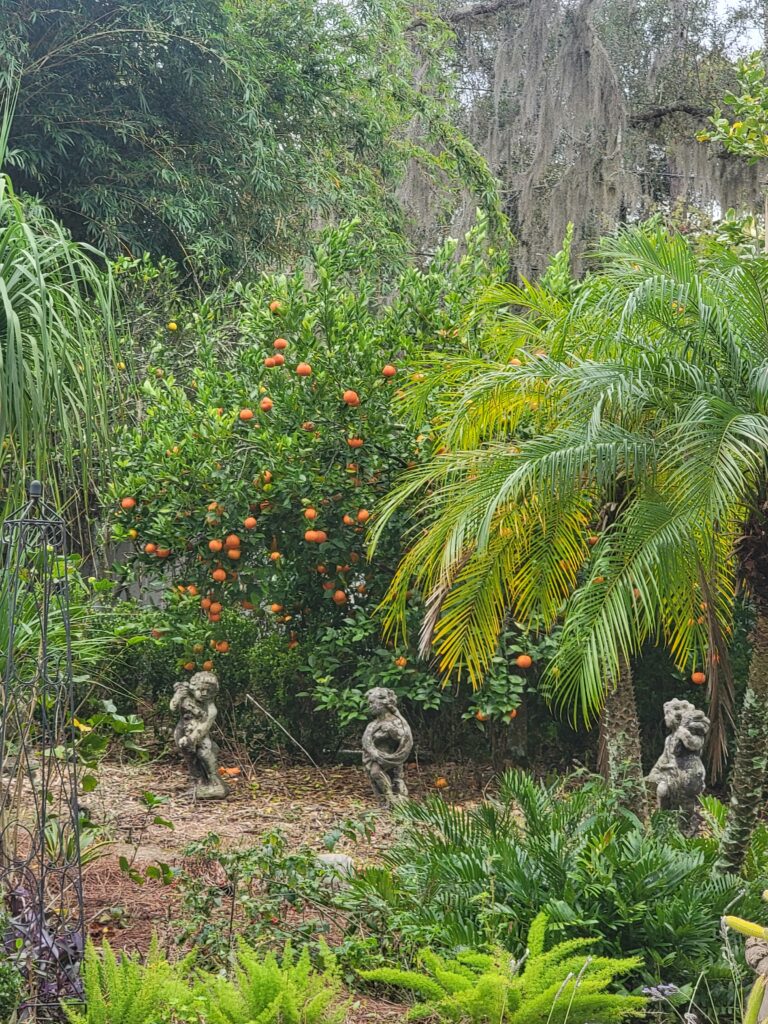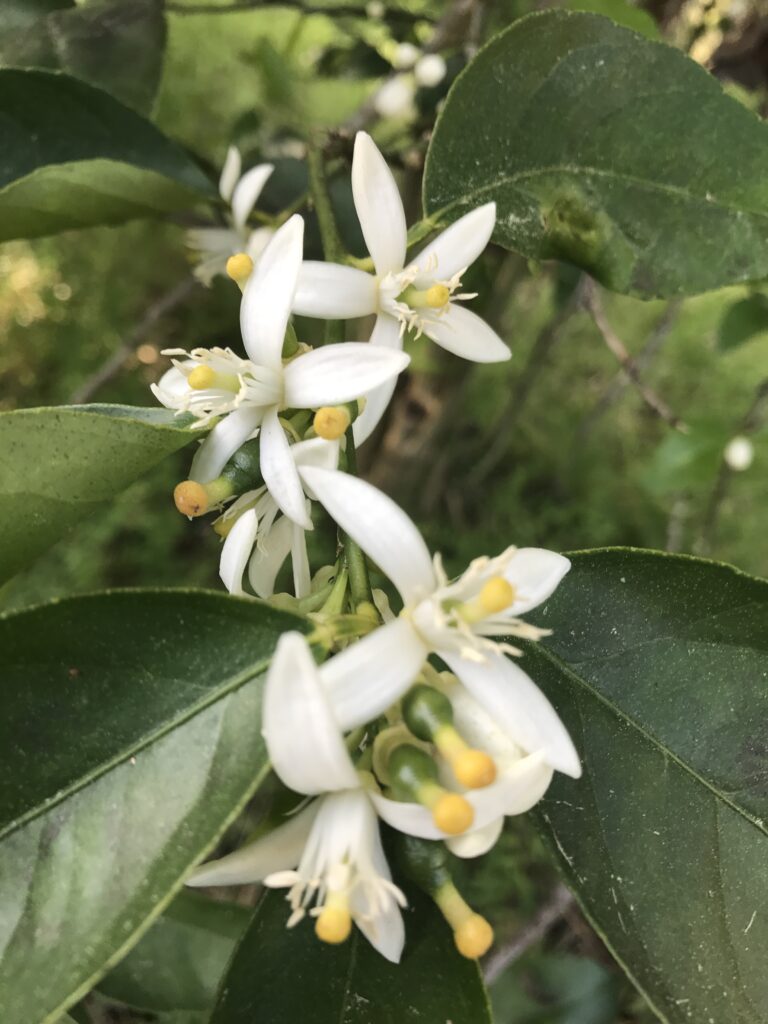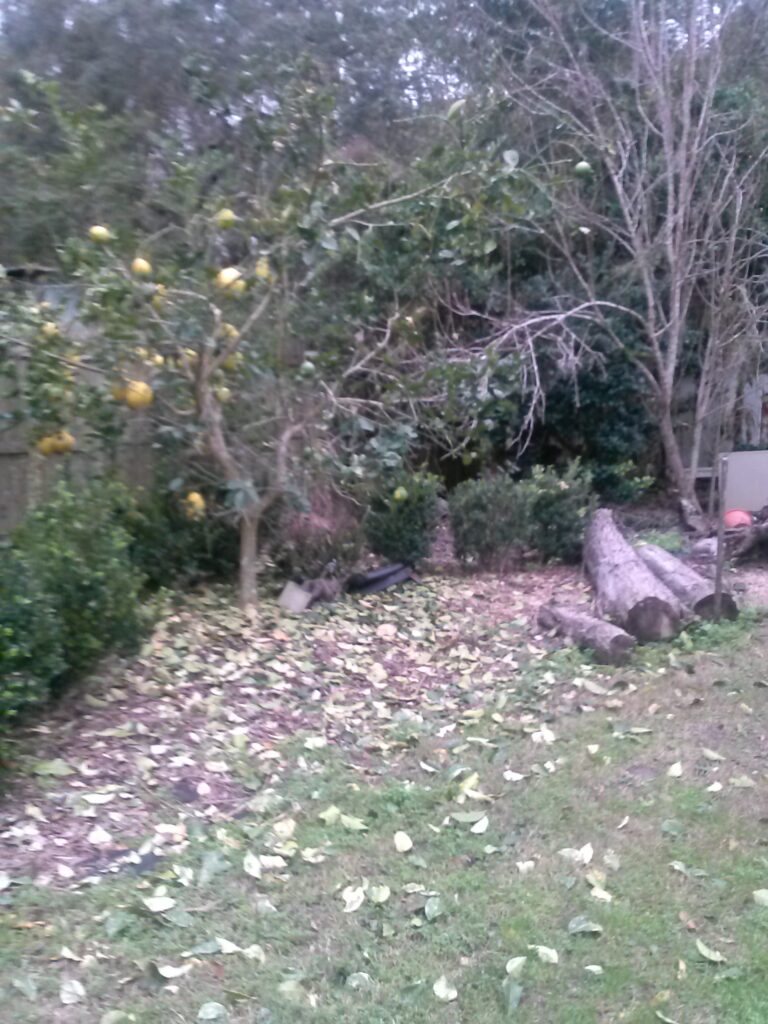S & J Nursery’s Guide to Growing
Citrus Trees
for the Northeast Florida Landscape

Northeast Florida’s Long History with Citrus Trees
It is a well documented fact that Citrus seeds were brought by the Spanish to Florida in the early to mid 1500’s. By 1563, groves or clusters of citrus trees had been planted and were producing fruit in St. Augustine and up and down the St. Johns river area where temperatures were ideal for sheltering Citrus trees from the cold.
The first commercial citrus grove in Florida was planted by Jessie Fish on Anastasia Island. Today, citrus crops are grown and sold in bulk in 30 of Florida’s 67 counties and are of major economical importance, even the leading source of income in some of those 30 Florida counties.
While commercial production of citrus has largely shifted southward due to the hard freezes of 1980, Northeast Florida area gardeners can still enjoy fresh citrus fruits from the garden with relative ease. In fact, some citrus trees, like Mandarin orange and even Navel oranges, are superior when grown in the cooler Northern regions of Florida.
Uses for Citrus Trees in Northeast Florida Garden Accents

The blooms smell and look great on all selections of citrus trees. The thick, waxy, and fragrant white flowers, in combination with their highly decorative fruits, make citrus trees an ideal ornamental specimen for any garden setting.
Protecting Your Citrus Trees From Frost Damage
Although many citrus tree selections are fairly cold tolerant. some citrus trees planted into areas in North or West Jacksonville may need protection from cold by covering the trunks with insulating material and a freeze cloth over the top. Citrus tree foliage may defoliate or damage when temperatures drop to freezing during the winter. Citrus fruits can damage after four hours of temperatures at around 26 degrees and will completely freeze on the tree if temperatures drop to 22 degrees.
South areas of Jacksonville or areas with microclimates created by nearby bodies of water, tall buildings and trees etc., and the St. Augustine area should be able to have fairly trouble free citrus trees that will only need occasional winter protection during an infrequent hard frosts or sudden temperature drops.
South areas of Jacksonville or areas with micro climates created by nearby bodies of water, tall buildings and trees etc., and the St. Augustine area should be able to have fairly trouble free citrus trees that will only need occasional winter protection during an infrequent hard frosts or sudden temperature drops.
Remember to watch for drastic temperature changes, where the weather, as it so often likes to do here in Northeast Florida, quickly goes form a warm 70-80 degrees to an overnight low of 32 or less. Cover your tree trunk paying close attention to the bud graft at the base of the trunk during drastic temperature drops or long lasting freezing temperatures, especially on newly planted or younger trees. And of coarse, make sure that they are getting that last dose of fertilizer in summer, and remember not to trim after September.
Where to Plant Your Northeast Florida Citrus Trees
in the Garden
Plant your citrus trees in well draining soils on the South side of the house, near tall native Pine trees or other frost blockers like fences or garden walls and sheds, or in any frost free area of your landscape where they will receive adequate sunlight. Citrus trees will grow in partially shaded environments but produce much more fruit in sunnier locations.
Planting Tips for Citrus Trees in Northeast Florida
Plant Citrus trees 15 ft apart when planting into groves
– Remember to leave adequate space for Citrus to spread when planting near home foundations, buildings fences etc. Try planting the center of the citrus tree at least 6-8 ft from foundations.
– Rough up the outside of the root ball after removing it from the Nursery container before you plant it into the ground.
– Plant citrus trees into native soils, or amend only lightly mixing in the small amount of compost or manure with the native soil before back filling the planting hole around the citrus tree roots.
– Plant your citrus tree slightly above the grade of the surrounding soil and make sure not to bury the top of the root ball with soil or mulch.

– As your citrus tree grows it is important to keep the ground area under the foliage free of grass and weeds.
– When planting citrus trees near or in shrub and perennial beds, remove mulch from around the trunk a minimum of 12 inches in all directions.
– Water newly planted citrus trees twice weekly and at least once a week during dry spells after the trees are established in to the landscape.
– Remember to skip the fall fertilizing in the fertilization routine described in the link below for Northeast Florida.
Mulch around the base of your citrus tree under and around the canopy with an Oak tree leaves you can find. UFIFAS now recommends this as a deterrent to help your tree remain free of Citrus Greening! The tannins in the oak leaves seem to be helping deter the Citrus Psyliids responsible for spreading Citrus Greening from tree to tree.
Click here to open a new window for more information on
Fertilizing Citrus Trees for the Northeast Florida home gardener.
Citrus Tree Cultivars for Northeast Florida Gardens
Bearss Lemon
Orlando Tangelo
Red Navel Orange
Cara Cara Navel
Pineapple Orange
Rhode Red Valencia
Blood Sanguinelli
Hamlin
Duncan Grapefruit
Marsh Grapefruit
Pink Grapefruit
Ruby Red Grapefruit
Ponkan Mandarin
Sunburst Tangerine
Honey Bell Tangelo
Honey Murcott Tangerine
Dancy Tangerine
Robinson Tangerine
Temple Orange
Persian Lime / Tahiti Lime & Bears Lime
Calamondin

